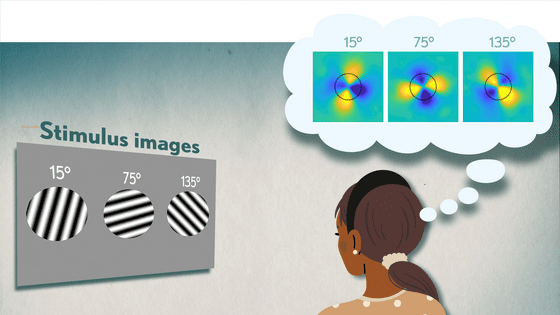It turns out that the human brain encodes and stores the information seen by the eyes in 'low resolution compressed data'

Many PCs and smartphones expand applications and other devices on memory, convert the data processed there into files in various formats, and store them in storage. However, if you save the data as it is, the capacity will be insufficient immediately, so for example, image data will be compressed in a format such as
Unveiling the abstract format of mnemonic representations --PubMed
https://pubmed.ncbi.nlm.nih.gov/35395195/
Human Brain Compresses Working Memories into Low-Res'Summaries' – NIH Director's Blog
https://directorsblog.nih.gov/2022/04/12/human-brain-compresses-working-memories-into-low-res-summaries/
Scientists Unveil How Our Memories Are Stored: The Format of Working Memory
https://scitechdaily.com/scientists-unveil-how-our-memories-are-stored-the-format-of-working-memory/
Working memory is an essential part of the advanced cognitive processes that humans perform every day, but little is known about how that information is transformed into memory. So, Professors Yuna Kwak and Clayton Curtis of New York University conducted a study to scan the brains of subjects viewing images and videos to study brain activity while using visual working memory. ..
The following is an illustration of the experiment. In this experiment, subjects were asked to look at and memorize images of lines tilted at various angles for 12 seconds, and after a break, remember 'in which direction they were tilted' as accurately as possible. ..

Similarly, experiments were conducted using images of a collection of points moving in a specific direction rather than a slanted line. Line images and moving point images are used because they are different types of visual information, but they all have in common that they point in a particular direction.
When Professor Kwak et al. Scand the brain of a subject during the experiment with functional magnetic resonance imaging (fMRI), the same pattern of neural activity was observed in the visual cortex and parietal lobe in both the tilted line experiment and the moving point experiment. I found that it happened. The visual cortex is literally the area of the brain that processes visual information, and the parietal lobe is the area used to process and store memory.
Researchers then focused on the result that 'different visual memories with the same meaning are processed in the same way in a common area', and a method of projecting three-dimensional brain activity data onto a plane. I used it for analysis. Then, a pattern just like a blackboard on a blackboard emerged. According to Professor Kwak et al., This meant that the subject compressed and stored visual information, including vast amounts of information such as line thickness and the number of dots, into simple information such as 'which direction was being pointed'. It is said that it is doing.

In another previous study, it was found that the visual information when looking at numbers and letters such as '123' is converted into pronunciations such as 'Ichi, Ni, San' and then memorized. This research has revealed a specific process for converting working memory information into memory.
Regarding this result, Professor Curtis said, 'Our visual memory is flexible, and what we see is abstracted into the information we interpret'what it means'. I understand that. '
Related Posts:
in Science, Posted by log1l_ks







